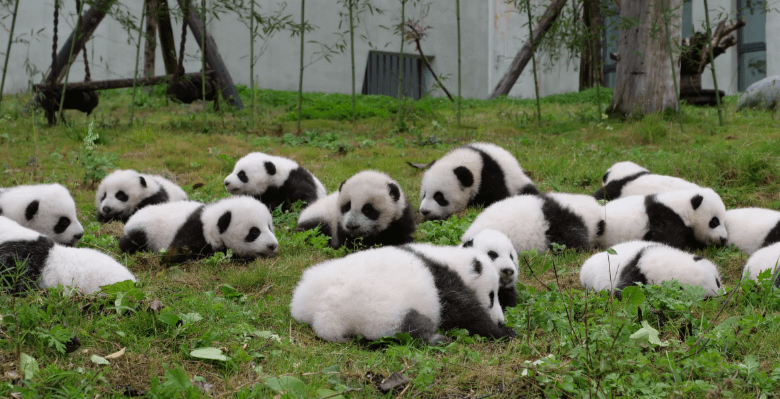Baby:_I2imshw4_U= Panda

The unique characteristics and developmental stages of Baby:_I2imshw4_U= Panda present a fascinating study in the realm of wildlife conservation. From their initial dependence on maternal care to their gradual journey towards independence, these young creatures embody both vulnerability and resilience. However, the obstacles they face, such as habitat loss and the intricacies of their dietary needs, raise critical questions about the effectiveness of current conservation initiatives. As we explore these challenges and their implications, the future of baby pandas hangs in a delicate balance, prompting a closer examination of our role in their survival.
Unique Characteristics of Baby Panda
Baby pandas, often described as adorably clumsy, exhibit a range of unique characteristics that set them apart in the animal kingdom.
Their playful demeanor captivates observers, showcasing a natural curiosity that drives exploration.
Essential to their development, panda nutrition primarily consists of bamboo, which supports their growth and energy needs.
This combination of baby playfulness and nutritional requirements highlights their endearing yet complex existence.
The Life Cycle of Pandas
Pandas undergo a fascinating life cycle that unfolds in distinct stages, each marked by significant changes and adaptations.
Early panda development relies heavily on maternal care, as mothers nurture their cubs with warmth and sustenance.
As these young pandas grow, they gradually gain independence, yet the bond with their mothers remains crucial, shaping their abilities to thrive in the wild.
Challenges Facing Baby Pandas
The survival of baby pandas is fraught with challenges that threaten their delicate existence in the wild.
Habitat loss due to deforestation disrupts their access to bamboo, the primary food source, while also impacting maternal care.
Without adequate shelter and resources, mother pandas struggle to nurture their young, leading to decreased survival rates and highlighting the urgent need for habitat preservation and protection.
Read Also Outline:0b0g8pfu-G0= Acorn Clipart
Conservation Efforts and Initiatives
Efforts to safeguard the future of baby pandas have gained momentum in recent years, addressing the various threats they face in their natural habitats.
Habitat preservation initiatives, coupled with robust breeding programs, have proven essential.
Moreover, promoting community involvement fosters local stewardship.
Establishing wildlife corridors enhances connectivity between habitats, allowing for healthier populations, ultimately ensuring the freedom and survival of these beloved creatures in the wild.
Conclusion
In a world where bamboo reigns supreme and clumsy antics steal the spotlight, Baby:_I2imshw4_U= Panda navigate a precarious existence, teetering between adorable playfulness and the harsh realities of survival. The challenges of habitat loss and maternal disruptions loom large, casting shadows over their future. Yet, amidst these trials, conservation efforts emerge as beacons of hope, reminding humanity that preserving these delightful creatures is not merely an option, but an obligation. After all, who could resist a future devoid of panda shenanigans?



